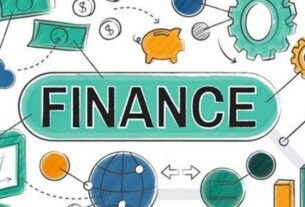Ripple has announced a strategic collaboration with Chainlink to enhance the utility and reliability of its Ripple USD (RLUSD) stablecoin within decentralized finance (DeFi) ecosystems. The partnership centers on integrating Chainlink’s decentralized oracle networks to deliver real-time price feeds for RLUSD across Ethereum and the XRP Ledger. The goal is to support cost-efficient transactions and broaden DeFi use cases for RLUSD, positioning the stablecoin as a robust, enterprise-grade asset in cross-chain financial activity. The integration ensures tamper-resistant, accurate, and highly available data, which is essential for the correct functioning of smart contracts that rely on RLUSD pricing. By providing continuous, high-quality market data through Chainlink’s decentralized nodes, Ripple seeks to minimize the risks of price manipulation and service downtime that can disrupt DeFi operations. In discussing the initiative, Ripple’s leadership has emphasized that reliable price data is a foundational element for the stablecoin’s expansion into payments, lending, and trading across DeFi platforms.
RLUSD and Chainlink Integration: Price Feeds, Cross-Chain Data, and Stablecoin Reliability
RLUSD is a dollar-backed stablecoin designed to facilitate a broad range of financial activities on blockchain networks. It is pegged to the U.S. dollar on a 1:1 basis and backed by reserves to maintain price stability for users and developers. The collaboration with Chainlink is aimed at delivering robust, tamper-evident price data to RLUSD on two widely used networks: Ethereum, which hosts a large and diverse DeFi ecosystem, and the XRP Ledger, Ripple’s own ledger designed for high-throughput and cost-efficient payments. This dual-network approach enables enterprises and developers to deploy RLUSD in various contexts without sacrificing data integrity or reliability.
Central to the arrangement is Chainlink’s ability to provide constant, tamper-proof price feeds for RLUSD via its distributed oracle infrastructure. The data supplied by Chainlink is intended to be resistant to manipulation and downtime, ensuring smart contracts that depend on RLUSD pricing can execute with confidence. The mechanism involves Chainlink’s network of independent nodes that aggregate, validate, and deliver price information. The integration is designed to function around the clock, delivering high-quality data continuously so that DeFi protocols, wallets, and other applications can reference RLUSD prices in real time.
Ripple has explained that this consistent data flow will support the functioning of smart contracts that rely on RLUSD, reducing price-related inaccuracies and helping developers incorporate RLUSD into a wide range of applications. With reliable pricing, developers can build more sophisticated DeFi products and services, including lending markets, collateralized borrowing, automated market maker (AMM) pools, and cross-chain liquidity solutions. The combination of RLUSD’s 1:1 USD backing with Chainlink’s secure data feeds creates a stable, dependable foundation for DeFi activity that is less susceptible to sudden price swings or data gaps. The partnership, described by industry observers as a strong signal for the market, underscores Chainlink’s role as a trusted data infrastructure layer and Ripple’s commitment to delivering a stable, programmable currency for enterprise use cases.
RLUSD in DeFi: Use Cases and Economic Implications
RLUSD is positioned as a versatile instrument for a broad spectrum of financial activities. Its 1:1 peg to the U.S. dollar makes RLUSD a practical store of value and medium of exchange for everyday transactions, while its stability and on-chain representation enable efficient transfer, settlement, and custody within DeFi protocols. In practice, RLUSD can be used for payments, enabling borderless, fast, low-cost transactions across participant networks. It also supports trading and lending activities within DeFi platforms, where users can supply RLUSD as collateral, borrow RLUSD-based tokens or other assets, and participate in liquidity provision without incurring excessive volatility risk.
The integration with Chainlink is expected to reduce price manipulation risks and price inaccuracy risks in RLUSD-based markets. Real-time, high-quality market data is critical for DeFi protocols that rely on RLUSD as collateral or as a pricing reference for derivative-like products and liquidity pools. The availability of reliable price feeds helps guard against price slippage, oracle manipulation, and data outages that could otherwise destabilize lending markets or automated strategies. Ripple has highlighted that the RLUSD data stream, supported by Chainlink’s decentralized network, will empower developers to embed RLUSD into a broad set of DeFi applications with greater confidence.
From a broader perspective, stablecoins like RLUSD play a pivotal role in bridging traditional finance and blockchain technology. They provide a familiar, fiat-pegged value anchor that supports fast, low-cost, borderless payments and can serve as a stable reference asset for cross-border transactions, remittances, and settlement layers within DeFi ecosystems. RLUSD’s design and Chainlink’s data standards align with the objective of creating a reliable, scalable financial instrument that participants can trust for routine use in complex DeFi structures. The partnership reinforces Ripple’s broader strategy to advance stablecoins and tokenized assets as central components of a modernized financial infrastructure that can operate across multiple blockchains and networks.
Cunningham’s remarks, reframed for broader context, suggest that the RLUSD launch and its Chainlink integration demonstrate the resilience and relevance of stablecoins in the evolving crypto landscape. The sustained alignment between stablecoin infrastructure and trusted data feeds indicates an ongoing trend toward more robust, regulated-ready DeFi ecosystems. This narrative continues to gain traction as more market participants recognize the value of dependable data in underpinning programmable finance. The collaboration also resonates with industry sentiment that stablecoins and tokenized assets are likely to lead the charge in driving mainstream adoption of blockchain technology in financial services.
The Role of Oracles: Why Chainlink, Data Feeds, and Security
Oracles are a foundational technology for DeFi, acting as bridges between on-chain smart contracts and off-chain information sources. They bring real-world data onto blockchains in a secure, verifiable manner so that smart contracts can trigger automated actions, such as loan repayments, collateral adjustments, or settlement events, based on externally sourced price information. Chainlink’s decentralized oracle network is designed to deliver this data with high assurance, leveraging multiple independent data providers and nodes to reduce the risk of single-point failure or data tampering. In the RLUSD context, Chainlink’s price feeds supply accurate RLUSD valuations and related market data to smart contracts running on Ethereum and the XRP Ledger.
The integration emphasizes tamper-proof data delivery, a feature critical for maintaining trust in DeFi applications that rely on RLUSD for collateral, liquidity, and settlement. By distributing data across a decentralized network, Chainlink mitigates operational risk and improves resilience against outages. The architecture is designed to maintain data integrity even in adverse market conditions or periods of high network activity. This robustness is essential for institutions and developers who require dependable pricing information to execute complex financial strategies, manage risk, and ensure timely settlements.
Chainlink’s data feeds are tailored to meet the standards required by RLUSD and its partners, ensuring compatibility with a wide range of DeFi protocols and cross-chain applications. In addition to price feeds, Chainlink’s ecosystem includes capabilities for securing data across multiple networks through its cross-chain interoperability protocol. This broader framework enables RLUSD to be integrated into diversified DeFi landscapes with consistent data quality and governance. The emphasis on open, auditable data provenance also supports regulatory compliance efforts, as stakeholders can trace price data back to credible sources within the Chainlink network.
Ripple’s decision to align RLUSD with Chainlink’s data standards signals a strategic move to participate in a broader, well-established oracle economy. It also highlights the importance of standardized data delivery for enterprise-grade stablecoins in DeFi. As the market evolves, developers and institutions will increasingly expect seamless access to reliable data streams that can be trusted across multiple networks, including public blockchains and private or permissioned ledgers. This situation strengthens the case for Chainlink as a universal data backbone and reinforces Ripple’s commitment to delivering secure, scalable financial products for a diversified user base.
Ripple’s Vision for Enterprise-Grade Stablecoins and DeFi Expansion
RLUSD is engineered to be a reliable, scalable stablecoin that supports a wide array of financial workflows. By ensuring a 1:1 peg to the U.S. dollar and tying this peg to high-quality, continuously updated price data via Chainlink, RLUSD becomes a more predictable asset for enterprise use. This predictability is essential for institutional users who require stable settlement values, auditable price references, and robust risk controls for payments, trading, lending, and other DeFi operations. The enterprise-grade design is intended to empower developers to build more complex and sophisticated financial products without sacrificing reliability or security.
The partnership with Chainlink aligns with Ripple’s broader strategic ambition to advance blockchain-based finance in practical, real-world scenarios. It supports Ripple’s efforts to grow RLUSD adoption beyond simple value storage into a broader set of DeFi utilities, thereby expanding the pool of potential users, liquidity providers, and developers building on its ecosystems. By providing reliable price data around the clock, the integration reduces friction for developers seeking to incorporate RLUSD into a variety of applications, from lightweight payments to complex collateralized lending arrangements. This, in turn, can accelerate the pace at which RLUSD gains traction within DeFi markets.
Cunningham’s statements, reframed, point to a belief that RLUSD’s launch reinforces confidence in the stablecoin and tokenized asset sectors as drivers of innovation in the blockchain industry. The sentiment is that the stability and resilience demonstrated by these assets will continue to push the broader crypto and fintech landscapes forward, even amid market volatility. The RLUSD initiative, in essence, is presented as part of a longer-term trajectory toward mainstream adoption of stablecoins and tokenized assets, with Chainlink’s data standards serving as a backbone for scalable growth. The collaboration exemplifies how established data infrastructure can underpin emerging financial technologies, creating a more robust foundation for a wide range of use cases in payments, trading, and lending.
Chainlink’s Broader Ecosystem and the Coinbase Project Diamond
Beyond the RLUSD partnership, Chainlink has expanded its reach through multiple strategic integrations that connect data feeds, oracles, and cross-chain capabilities with major institutions and platforms. Notably, Chainlink’s integration with Project Diamond, a digital asset platform for global institutions associated with Coinbase, marks a significant step in bridging regulated, institution-focused markets with decentralized finance infrastructure. Project Diamond is regulated by the Financial Services Regulatory Authority of the Abu Dhabi Global Market (ADGM) and is designed to provide data integration and lifecycle management for tokenized assets. By combining Chainlink’s data feeds with a regulated platform that supports tokenized assets, the ecosystem gains enhanced capabilities for secure data delivery, asset tokenization, and lifecycle governance across both public and private networks.
Chainlink’s role in connecting public blockchains with traditional financial systems is facilitated by its cross-chain Interoperability Protocol (ccIP). This protocol enables secure and reliable data transfer and interaction across different blockchains and networks, supporting a broad spectrum of DeFi and tokenized asset use cases. The integration with RLUSD on Ethereum and the XRP Ledger benefits from these capabilities, enabling RLUSD to be referenced and managed across diverse ecosystems with consistent data quality and governance. The broader Chainlink ecosystem thus reinforces its position as a foundational data infrastructure layer for DeFi, enterprise-grade stablecoins, and tokenized financial instruments.
This multi-layered approach—connecting RLUSD to Chainlink’s secure data feeds, leveraging cross-chain interoperability, and integrating with regulated institutional platforms like Project Diamond—highlights a broader trend in the industry: the convergence of DeFi, tokenization, and traditional finance under a unified data and governance framework. For Ripple and RLUSD, the outcome is greater interoperability, enhanced trust, and expanded opportunities for adoption in both retail and institutional contexts. The trend aligns with market expectations that data integrity, regulatory compliance, and cross-chain operability will be essential enablers for the next wave of DeFi innovation and institutional participation.
Cross-Chain Data, Interoperability, and Market Leadership
The RLUSD–Chainlink collaboration embodies a broader strategy to secure cross-chain liquidity and reliable data across multiple networks. By delivering price feeds to RLUSD on Ethereum and the XRP Ledger, the partnership reduces fragmentation and fosters a more unified experience for developers and users who prefer or require cross-chain functionality. Interoperability is a central theme in the evolving DeFi landscape, where assets and protocols must operate smoothly across disparate networks to unlock liquidity, enable efficient settlement, and support scalable, programmable finance.
The integration also reinforces Chainlink’s strategic role as a universal data layer for DeFi, a role that many market participants see as essential for sustainable growth. For RLUSD, the emphasis on dependable, real-time data is a critical differentiator when compared with some of the more volatile or less transparent assets in the space. The combination of Chainlink’s decentralized data feeds with RLUSD’s straightforward USD peg provides a stable reference point that developers can rely on when designing and deploying financial products. In addition, this architecture signals Ripple’s intention to position RLUSD not merely as a payments-focused stablecoin but as a flexible instrument suitable for sophisticated DeFi strategies and enterprise-grade deployments.
Market observers note that the partnership reinforces the narrative that robust data governance and cross-chain compatible assets are prerequisites for scaling DeFi in a way that appeals to institutions and regulated participants. The collaboration’s emphasis on security, uptime, and data integrity aligns with evolving expectations around trusted DeFi infrastructure. As RLUSD gains more exposure and liquidity across Ethereum, XRP Ledger, and potentially other networks in the future, the ecosystem could see increased demand from developers seeking a stable, well-supported asset for collateral, settlement, and programmable finance workflows. The overall trajectory points toward a more resilient, data-driven DeFi environment where stablecoins and tokenized assets become fundamental building blocks for a wide range of applications.
Regulatory Landscape and Risk Considerations for Stablecoins in 2025
As stablecoins and tokenized assets become more deeply integrated into DeFi ecosystems, regulatory considerations continue to shape their trajectory. The RLUSD–Chainlink collaboration operates within a broader context in which stablecoins are scrutinized for transparency, reserve management, and risk controls. A key aspect of enterprise-grade stablecoins is the emphasis on verifiable data and auditable price references, which can support compliance efforts and improve risk management for institutions and developers using RLUSD in sophisticated financial products.
DeFi markets are increasingly scrutinized for potential vulnerabilities, including price manipulation, oracle failures, and liquidity risks. By leveraging Chainlink’s decentralized oracle network for RLUSD price feeds, the partnership aims to mitigate these risks by distributing data across multiple independent nodes and ensuring data provenance. This architecture is designed to enhance resilience and reduce single points of failure that could otherwise lead to adverse market events. The ongoing emphasis on data integrity, uptime, and governance aligns with regulatory expectations for robust, auditable financial infrastructure.
In parallel, the broader regulatory environment is evolving as authorities assess the implications of stablecoins, cross-chain asset transfers, and tokenized assets. Market participants expect greater clarity around disclosure requirements, reserve standards, and governance practices to support safer adoption. The RLUSD initiative, with its emphasis on trusted data feeds and cross-chain operability, positions the project to meet these evolving standards while enabling developers and institutions to participate in DeFi with a greater degree of confidence. As the industry matures, continued collaboration between stablecoin issuers, data providers, and regulators will likely shape future developments, including standardized reporting, liquidity benchmarks, and risk-focused governance frameworks.
Technical Architecture and Data Flow
The technical architecture underpinning RLUSD’s integration with Chainlink rests on a robust data-flow model designed to ensure timely, accurate, and auditable price information. Price feeds originate from Chainlink’s network of decentralized nodes, which aggregate data from multiple sources and deliver it to on-chain smart contracts that rely on RLUSD pricing. The feeds are designed to be tamper-resistant, with data validated by multiple independent observers to minimize the potential impact of any single compromised source. This architecture reduces latency and enhances reliability, enabling real-time price-based actions within DeFi protocols and enterprise applications.
On Ethereum and the XRP Ledger, RLUSD smart contracts can reference price feeds to trigger events such as collateral rebalancing, loan liquidations, or settlement calculations. The cross-chain capability supported by Chainlink’s Interoperability Protocol further enables RLUSD to be used across networks while retaining consistent price references. This cross-chain feature lowers barriers to entry for developers who want to deploy RLUSD in multi-network environments, expanding the stablecoin’s addressable market and increasing potential liquidity.
From a security perspective, the design prioritizes resilience against manipulation. Chainlink’s decentralized model disperses trust by distributing price data across many independent nodes, reducing the likelihood that a single node or data source could influence outcomes. The system also incorporates data-feeds with time sanity checks and cryptographic proofs to ensure data integrity. Ripple’s approach to RLUSD data feeds emphasizes these security properties, aligning with best practices in DeFi infrastructure to provide a trustworthy foundation for complex financial activities such as lending, collateralization, and automated market making.
Developers integrating RLUSD into their applications can expect a standardized data interface and clear governance over data sources, which enhances interoperability and simplifies compliance workflows. The combination of a trusted data layer with a stable, USD-pegged asset supports the construction of robust DeFi protocols and enterprise-grade financial products that require predictable settlement values and transparent data provenance. This technical foundation positions RLUSD to scale responsibly as DeFi ecosystems grow, enabling more sophisticated use cases and broader adoption across diverse industries.
Market Momentum and Industry Context
While the RLUSD–Chainlink collaboration is a focused initiative, it sits within a broader market momentum toward stablecoins, tokenized assets, and regulated DeFi infrastructure. Projects across the ecosystem are exploring how to combine stable value with programmable features, cross-chain operability, and enterprise-grade governance. The integration exemplifies how established data ecosystems and next-generation ledger technologies can come together to support scalable, secure, and compliant financial innovations.
The broader market narrative includes ongoing conversations about the role of stablecoins in payments, settlements, and liquidity provisioning, as well as the importance of high-quality data in sustaining confidence and growth in DeFi. Market participants increasingly seek stable, well-governed assets that can act as reliable rails for cross-border transactions and cross-chain liquidity. The RLUSD initiative reflects these trends by prioritizing data integrity, cross-chain accessibility, and enterprise-grade reliability. As more institutions and developers adopt RLUSD and related products, the ecosystem could experience enhanced liquidity, deeper market participation, and more resilient DeFi protocols overall.
This strategic direction also aligns with the idea that the crypto and blockchain industry can learn from traditional financial systems—particularly regarding risk management, governance, and data transparency. By combining a stable, dollar-backed asset with a robust, decentralized data infrastructure, RLUSD positions itself as a credible building block for the next generation of financial applications. The partnership’s emphasis on reliability and cross-chain capabilities resonates with institutions that require scalable, auditable, and compliant technology stacks to support innovative financial products and services.
Future Outlook: Strategic Implications for DeFi and Traditional Finance
Looking ahead, the RLUSD–Chainlink collaboration could catalyze broader adoption of stablecoins within DeFi and institutional workflows by delivering a dependable data backbone and cross-chain accessibility. As more developers and enterprises seek to deploy RLUSD in diverse environments, the demand for high-quality price feeds and reliable data governance is likely to grow. The partnership may spur further innovations around tokenized assets, collateralized lending, and payment rails that exploit the combination of stable value and programmable finance. The expectation is that RLUSD will become more deeply embedded in DeFi protocols, with enhanced liquidity, lower risk of price manipulation, and more predictable settlement dynamics.
The involvement with Coinbase’s Project Diamond–a regulated platform designed to facilitate tokenized assets for institutional markets–alongside Chainlink’s data infrastructure, demonstrates a concerted effort to bring regulated, institutional-grade capabilities into the DeFi space. The collaboration suggests a pathway for RLUSD and similar stablecoins to be integrated into more formal financial workflows, potentially expanding access to regulated pools, custody solutions, and compliant trading venues. The cross-border and cross-network capabilities highlighted by Chainlink’s protocol further imply that RLUSD could play a role in international settlement and liquidity provisioning, supporting faster, cheaper cross-border transactions that align with the needs of modern financial networks.
For Ripple, the strategic emphasis on RLUSD as a flexible, enterprise-grade stablecoin backed by Chainlink data feeds signals a broader ambition to lead in tokenized finance. The company’s focus on robust settlement, programmable payments, and DeFi readiness positions RLUSD to compete with other stablecoins that prioritize data integrity and governance as critical differentiators. If RLUSD gains traction in both retail and institutional segments, it could contribute to a more integrated and efficient financial landscape, where stable values, transparent data, and interoperable networks enable a wider range of products and services.
Industry observers may also note that the RLUSD initiative reflects a maturing DeFi ecosystem in which data integrity and cross-chain interoperability are increasingly recognized as essential prerequisites for scalable adoption. As more projects adopt Chainlink’s oracle network and similar data infrastructure solutions, a market-wide emphasis on reliability and governance could emerge, encouraging better risk management practices and more robust compliance frameworks. The resulting ecosystem would be characterized by improved resilience, greater liquidity, and more predictable outcomes for participants across payments, trading, lending, and other DeFi activities.
Conclusion
In summary, the collaboration between Ripple and Chainlink to embed RLUSD price feeds into Ethereum and the XRP Ledger represents a significant milestone for stablecoins, DeFi infrastructure, and cross-chain interoperability. By delivering tamper-resistant, real-time data through a decentralized oracle network, the partnership aims to strengthen the reliability and utility of RLUSD across a wide range of applications. The enterprise-grade design—anchored by a 1:1 USD peg, robust collateral frameworks, and continuous data feeds—seeks to reduce manipulation and downtime risks while enabling developers to build more sophisticated DeFi services, payments, and lending platforms.
The strategic integration aligns with Ripple’s broader vision of expanding RLUSD adoption and advancing blockchain-based finance as a practical, scalable solution for enterprises. The collaboration with Chainlink complements Ripple’s ecosystem by enabling high-quality market data to support smart contracts and cross-chain use cases, underpinning a more resilient and capable DeFi landscape. The broader Chainlink ecosystem, including its partnerships with regulated platforms and institutional markets, reinforces the potential for RLUSD to participate in regulated, asset-backed tokenization and institutional-grade liquidity solutions. Together, these developments contribute to a more interconnected, data-driven financial infrastructure that can accommodate traditional finance’s expectations for transparency, governance, and risk management while unlocking the benefits of programmable money and cross-chain settlement.
This momentum signals a broader shift toward stable, well-governed digital assets that can operate seamlessly across networks, bridging the gap between conventional financial systems and innovative blockchain technologies. As RLUSD gains traction within DeFi and enterprise environments, its price data fidelity and cross-chain operability will be critical factors in determining its long-term impact on payments, lending, and asset tokenization. Stakeholders—from developers and liquidity providers to institutions and end users—will be watching how RLUSD and Chainlink’s collaboration evolves, how data governance frameworks are implemented, and how the market responds to an increasingly connected and data-enabled stablecoin ecosystem. The ongoing trajectory suggests a future in which reliable price data, cross-chain interoperability, and stable, programmable assets form the backbone of a more efficient, inclusive, and innovative financial landscape.



